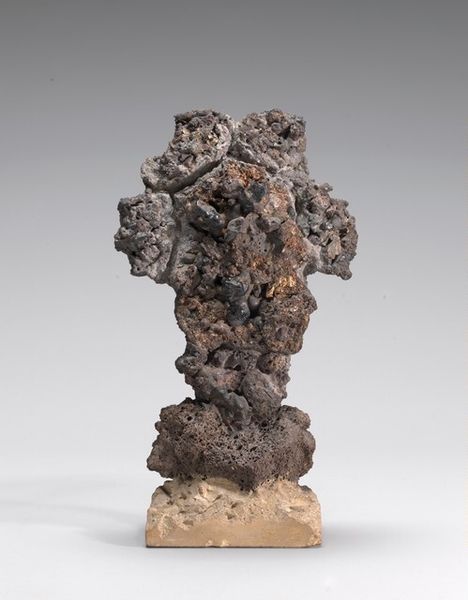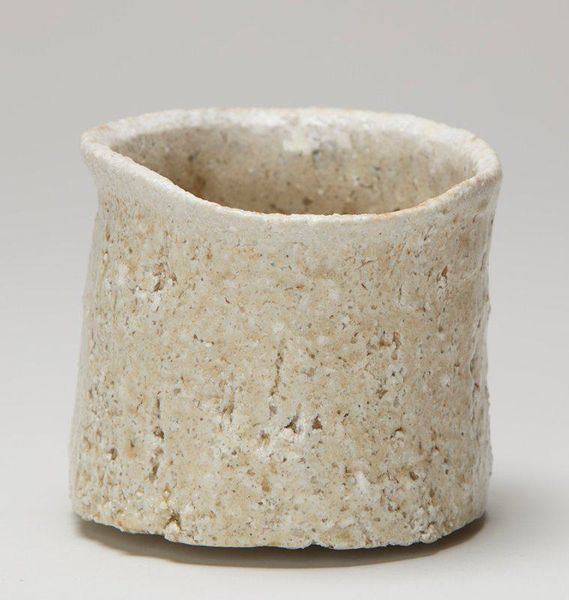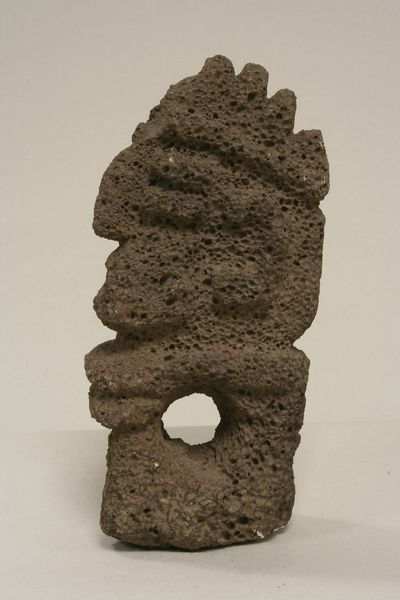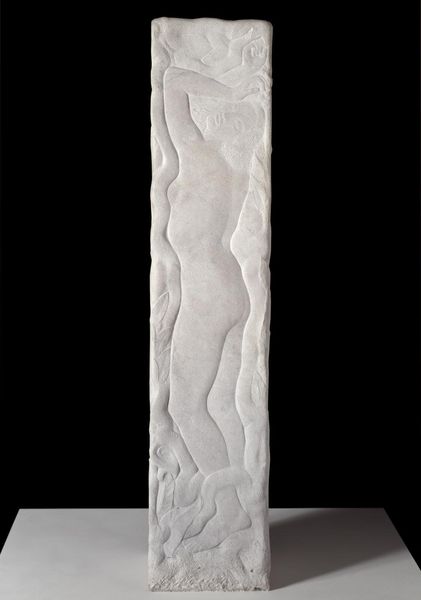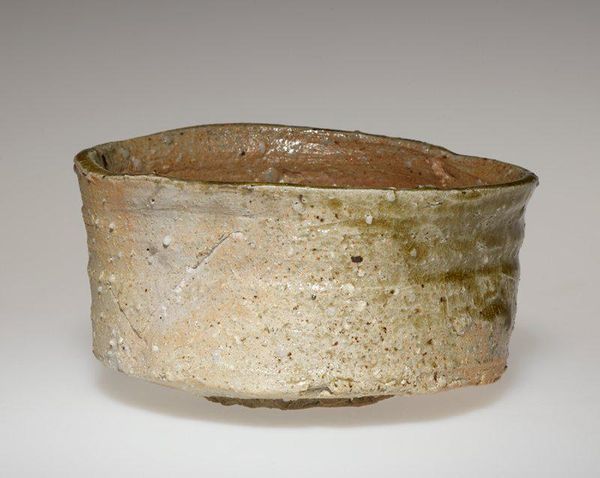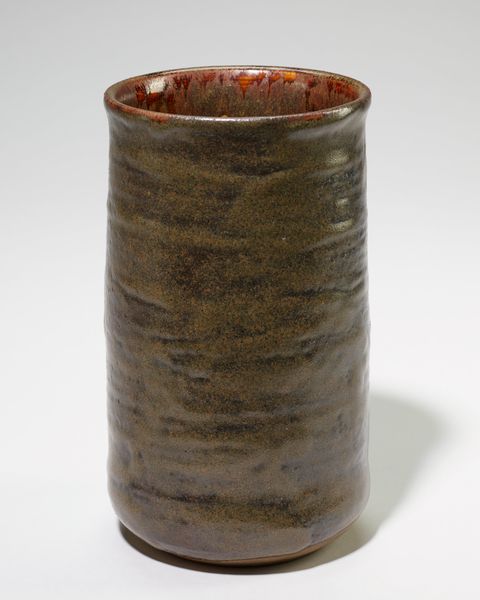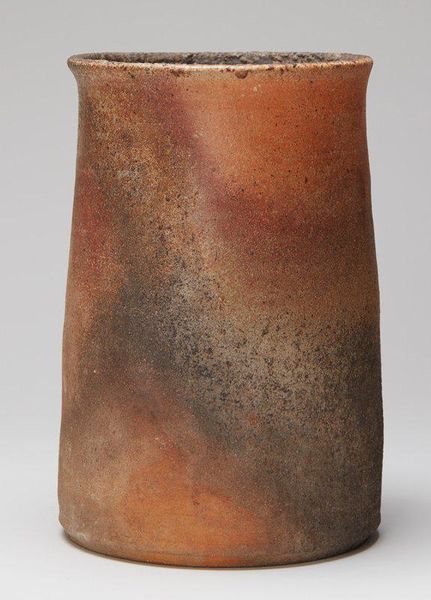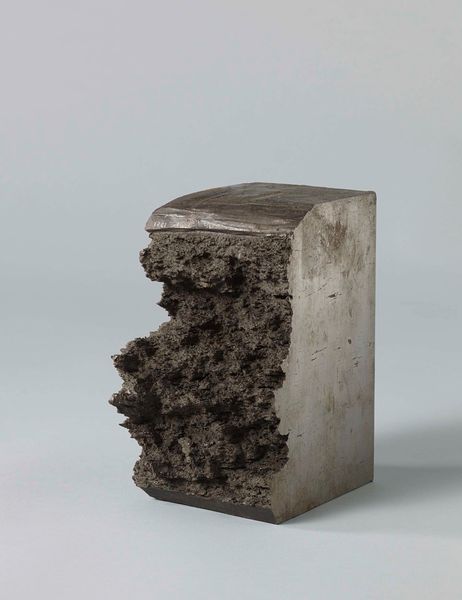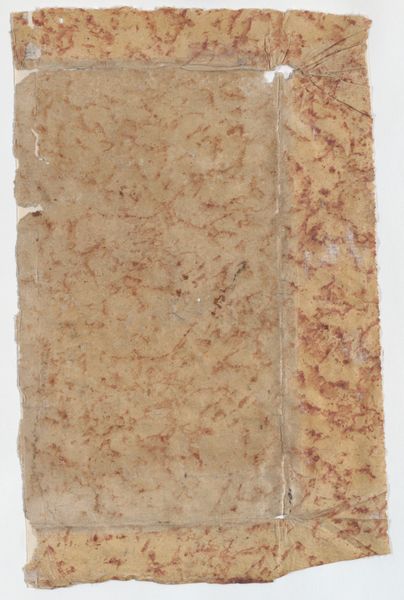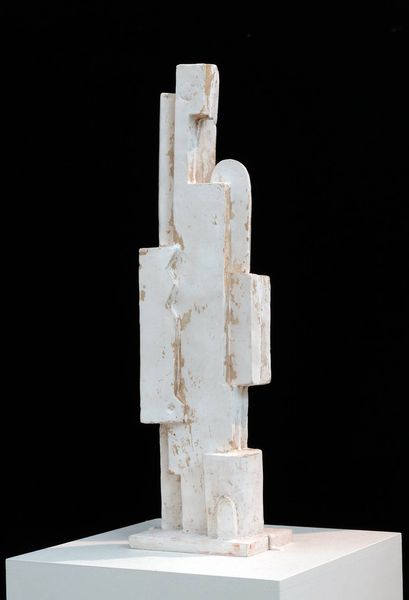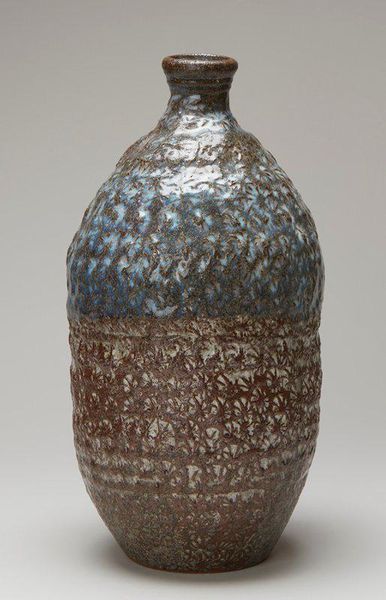
Dimensions: 11 9/16 x 5 3/16 x 5 3/16 in. (29.37 x 13.18 x 13.18 cm)
Copyright: No Known Copyright
Curator: Looking at this piece by Tsujimura Shiro, from around the 20th century, the “Triangular Vase,” you’re immediately struck by the way he plays with expectation, right? It's this chunky assemblage that questions what a vase even *is*. Editor: It looks less like something made and more like something found. Almost geological, like a chunk of eroded cliff face someone just decided to put on display. It gives off such a primal feeling, like some artifact left behind by a long-gone civilization. Curator: Exactly! He’s known for challenging traditional Japanese ceramic techniques, drawing heavily on Shigaraki ware's earthy aesthetic, in which forms arise from the processes of fire and chance, yet filtered through the abstract and modernist sensibility he would later cultivate. Look how raw the clay body appears. Editor: That heavy texture makes me want to run my hands all over it! You know, pottery's such an ancient human endeavor. And the artist leaves the rough and raw character on this work and he leaves the traces from the raku firing! It’s as if the creator wants to keep it wild. Untamed. Is this supposed to be a flower vase? Because I find it difficult to picture this piece holding cut flowers inside it. Curator: Well, I suppose it could! But it's more of an idea of a vase—a symbolic container. Notice how the title is in parenthesis as well? He’s not interested in function so much as he is in form and the tension between natural processes and human intervention. Editor: And the green coloring on the corner adds a sense of time and nature too. As if nature has worked on this already; has colored it with algae or moss over years. Maybe even centuries. The artist leaves it to chance as well to develop in unpredictable directions? The way light interacts with those crevices and peaks makes for an almost miniature landscape, right? A sense of wonder when encountering something totally unique and unforeseen? Curator: Precisely. So much of Shiro’s work deals with the Wabi-sabi aesthetic and rustic ethos of handmade ceramic traditions, using this sculptural vessel, which defies expectation with its rugged, earthy materiality, for example. A sense of finding beauty in imperfection is always important to keep in mind. Editor: Definitely a captivating piece that really blurs the lines. It really makes one re-consider the role of functional ceramics and its artistic possibilities, too. Curator: A sentiment with which I strongly concur! I suppose our time’s up; I can go around this ceramic block for a full half-hour, easy!
Comments
No comments
Be the first to comment and join the conversation on the ultimate creative platform.
